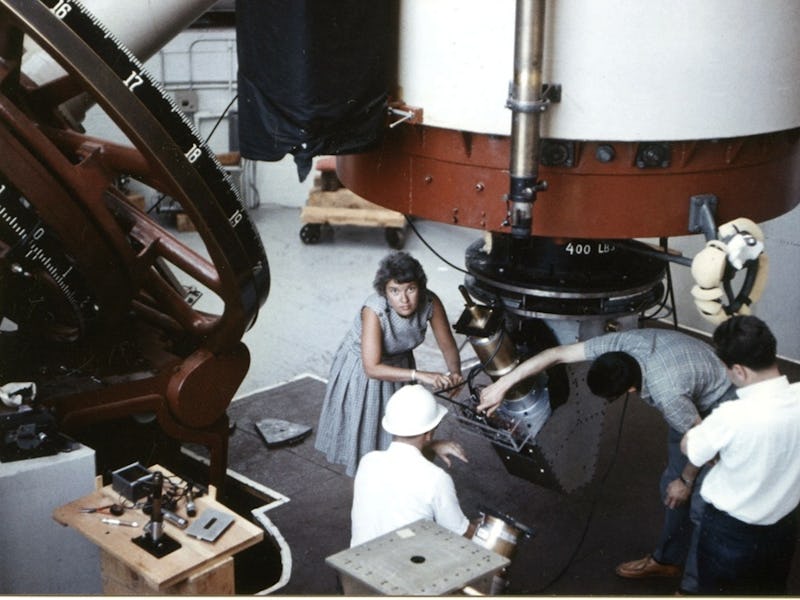Vera Rubin, the astrophysicist who found evidence for the existence of dark matter, died on Sunday at the age of 88, in her home in Princeton, New Jersey. An awardee of the National Medal of Science and a pioneer for women in the STEM fields, Rubin’s work was one of the most impactful discoveries in the modern era of physics, and would permanently shape the discipline as it moved forward into the 21st century.
“Vera Rubin was a national treasure as an accomplished astronomer and a wonderful role model for young scientists,” said the Carnegie Institution for Science’s president Matthew Scott, in a statement. “We are very saddened by this loss.”
For the fields of astronomy and physics, determining whether dark matter existed, well, mattered a great deal. In observations outer space as a whole, scientists had continuously noticed that many objects were moving and accelerating in ways that could not be accounted for by the gravitational forces of known, observed objects. There had to be a reason why certain stars and galaxies were moving so strangely.
One theory proposed in 1933, by Swiss astrophysicist Fritz Zwicky, was that a big chunk of the universe was composed of a type of matter we couldn’t directly detect. We now now this stuff to be dark matter, which makes up about 27 percent of all observable mass in the universe. And it’s all thanks to Rubin why we know this stuff exists.
Rubin began studying stellar orbits in the 1960s. She and her colleague Kent Ford specifically focused on the Andromeda galaxy. When the speeds of the stars at the galactic center didn’t conform to what was already predicted by Newtonian gravitational theory. Rubin, Ford, and others pushed their observations into the 1970s, and determined that some sort of invisible mass was responsible.
They specifically realized that the Andromeda galaxy, and other spiral galaxies like it, were embedded in a “halo” of dark matter that was about five to 10 times more massive than regular matter.
Besides this breakthrough, Rubin was an incredible influence in helping to open up science to women. The Nobel Prize Committee snubbed her for the award for physics for all of these years, and it’s a damn shame. ““The existence of dark matter has utterly revolutionized our concept of the universe and our entire field,” University of Washington astronomer Emily Levesque told Astronomy magazine earlier this year. “The ongoing effort to understand the role of dark matter has basically spawned entire subfields within astrophysics and particle physics at this point. Alfred Nobel’s will describes the physics prize as recognizing ‘the most important discovery’ within the field of physics. If dark matter doesn’t fit that description, I don’t know what does.”
Yet she constantly pushed for the inclusion of more women in the hard sciences like physics and space. “All of us, men and women alike, need permission to enter and continue in the world of science,” Rubin for a 1986 editorial in Science. “While such permission has generally been granted to bright men, it is always been less readily granted to young women and continues to be denied to many women even today.”
Rubin’s legacy, however, perhaps doesn’t need to the Nobel Prize to be celebrated. The entire field of dark matter research owes its debt to her, and won’t ever forget it.
